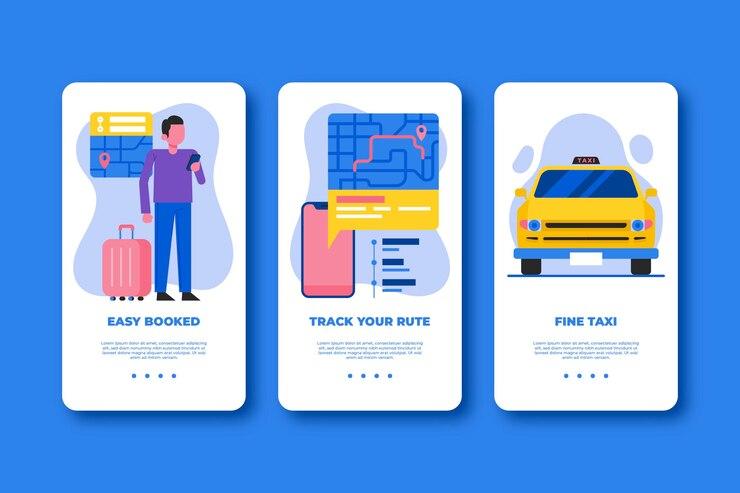How to Build a Scalable Uber Clone App from Scratch

Building a scalable Uber clone is one of the most promising business opportunities in the on-demand market. With consumers expecting fast, reliable, and convenient transportation, entrepreneurs and startups are looking for efficient ways to launch a white label rideshare app that can grow seamlessly as demand increases. This guide breaks down the development process, essential features, cost considerations, scalability factors, and everything else you need to know.
Understanding the Concept of an Uber Clone
An Uber clone is a fully functional ridesharing application that mimics the core features of Uber, including real-time tracking, ride booking, driver management, and fare calculation. It can be built from scratch or developed using a white label rideshare app solution. The goal is to create a robust platform that connects passengers with drivers quickly and safely using advanced technologies.
Why Building a Scalable Uber Clone Matters
Scalability is the foundation of a sustainable rideshare business. If your platform cannot handle growth, increasing user traffic, or expanding service locations, your business will face performance issues. A scalable platform ensures smooth operations, faster load times, real-time updates, and a secure experience as the user base grows.
Key reasons scalability is essential:
- Increasing demand requires stable performance.
- Expanding into new cities or regions needs a flexible backend.
- Real-time tracking and navigation must work without lag.
- It supports advanced features like surge pricing and fleet management.
- More drivers and users require optimized database structuring.
Step-by-Step Guide: How to Build a Scalable Uber Clone App from Scratch
1. Conduct Market Research and Competitor Analysis
Before starting development, identify your target audience, service locations, preferred features, and competitors. Analyze what existing companies are doing well and where the market gaps lie. This helps you build a more appealing value proposition.
Key steps include:
- Studying the demand for rideshare services in your region.
- Reviewing features in apps like Uber, Lyft, or Grab.
- Understanding customer pain points such as pricing, safety, or availability.
- Defining your unique selling point.
2. Define the Core App Architecture and Business Model
A scalable Uber clone requires a strong architectural foundation. This includes planning your business model and revenue streams.
Common business models include:
- Commission on rides
- Subscription model for drivers
- Surge pricing in peak hours
- In-app advertising
- Premium ride options (luxury, pooled, rental)
Plan the workflow for admin, driver, and user panels.
3. Choose the Right Tech Stack
Technology selection directly impacts scalability, performance, and long-term maintenance.
Recommended tech stack components:
- Frontend: React Native, Flutter, Swift, Kotlin
- Backend: Node.js, Python Django, Ruby on Rails
- Database: MongoDB, PostgreSQL, MySQL
- Real-Time Tracking: Google Maps API, Mapbox
- Push Notifications: Firebase Cloud Messaging
- Cloud Hosting: AWS, Google Cloud, Azure
- Payment Gateways: Stripe, PayPal, Razorpay
Choosing modern and flexible technologies ensures your white label rideshare app handles high traffic smoothly.
4. Design an Intuitive UI/UX for Users and Drivers
A user-friendly interface enhances adoption and ensures customers don’t switch to competitors.
Key design principles:
- Simple onboarding for users and drivers
- Easy navigation for booking rides
- Clean interface with minimal steps to complete actions
- Clear map visuals and ride details
- Safety features easily accessible
The driver app should offer quick access to ride requests, earnings, and navigation tools.
5. Develop the Core Features of the Uber Clone
A feature-rich platform is essential for success. Focus on building both basic and advanced functionalities.
Essential User Features:
- Registration and login
- Real-time ride booking
- GPS-based ride tracking
- Fare estimation
- In-app payments
- Rating and reviews
- Ride history
Essential Driver Features:
- Registration and verification
- Ride request acceptance or rejection
- Navigation support
- Earnings dashboard
- Availability toggles
- Trip history
Admin Panel Features:
- User and driver management
- Ride and fare control
- Commission settings
- Analytics dashboard
- Complaint management
6. Integrate Real-Time Features for Smooth Operations
Real-time functionalities differentiate a strong rideshare platform from a basic app.
Key real-time tech implementations:
- WebSockets for instant communication
- GPS integration for live tracking
- AI-based route optimization
- Auto driver allocation algorithm
- Real-time notifications
These features help provide seamless user experience and quick ride matching.
7. Implement Security and Compliance
Security is critical when building a platform handling payments, personal data, and live tracking.
Ensure:
- End-to-end data encryption
- Secure payment gateway integration
- Compliance with local transportation laws
- Driver background verification system
- Emergency assistance features
8. Test the App Extensively Before Launch
A scalable Uber clone must be tested for performance, user experience, security, and reliability.
Types of testing:
- Functional testing
- Performance & load testing
- UI/UX testing
- GPS accuracy tests
- Payment gateway testing
- Security testing
Testing ensures the platform can manage a large number of users without failing.
9. Deploy on Scalable Cloud Infrastructure
Cloud platforms like AWS, GCP, and Azure offer auto-scaling capabilities, allowing your app to handle traffic spikes efficiently. Use load balancers, CDN, and multiple server nodes to ensure app stability.
This is a crucial step for future expansion.
10. Launch, Monitor, and Continuously Improve
After the app goes live, monitor performance and user behavior. Regular updates, feature enhancements, and bug fixes are essential to keep your white label rideshare app competitive.
Cost of Building a Scalable Uber Clone App
The cost depends on:
- Features and complexity
- Technology stack
- Region of development team
- UI/UX design quality
- Third-party APIs and integrations
On average, developing a scalable Uber-like app from scratch can range between $5,000 and $25,000+. Using a white label solution may reduce costs and launch time significantly.
Conclusion
Building a scalable Uber clone from scratch is a strategic investment for entrepreneurs aiming to enter the booming rideshare market. By choosing the right tech stack, integrating real-time features, designing a seamless user experience, and hosting on a scalable cloud infrastructure, you can develop a high-performing white label rideshare app capable of long-term growth. With proper planning, testing, and continuous updates, your rideshare platform can compete with top players and capture a strong market share.
Frequently Asked Questions (FAQs)
1. What is an Uber clone?
It is a rideshare application that replicates the core functionality of Uber, offering features like real-time tracking, ride booking, and driver management.
2. How long does it take to develop a scalable Uber clone?
From scratch, it can take 3–6 months depending on complexity. Using a white label rideshare app reduces development time to a few weeks.
3. Can I customize the Uber clone according to my business needs?
Yes, you can customize features, design, branding, and business models to suit your requirements.
4. What technologies are used to build a scalable Uber-like app?
Technologies include Node.js or Python for backend, Flutter or React Native for mobile apps, and cloud platforms like AWS for hosting.
5. How can I ensure scalability for my rideshare app?
Choose a flexible architecture, use cloud hosting, integrate optimized databases, perform load testing, and follow a microservices approach.
6. Is a white label rideshare app a good option for startups?
Yes, it allows faster launch, reduced development cost, and easy customization.




